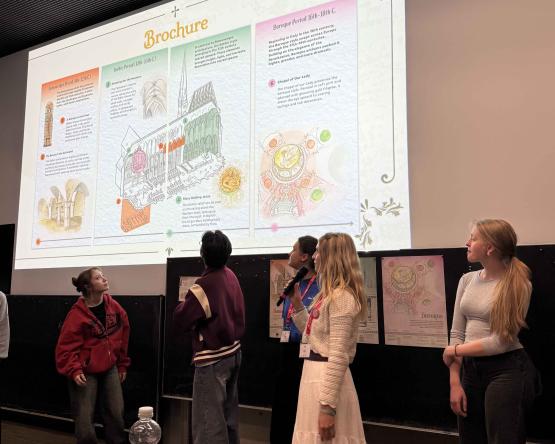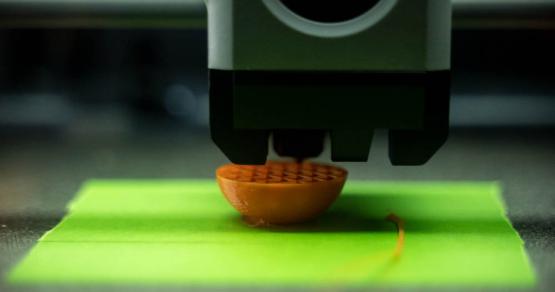Ohio University students are blending the worlds of health care and design to reshape clinical environments for the better. Students from the College of Health Sciences and Professions (CHSP) and the Chaddock + Morrow College of Fine Arts have come together to reimagine spaces where children and families receive care.
Savannah Simonson, BSCFS '22, MSCFS '24, a certified child life specialist, said her time with the Healing Spaces project was a major learning opportunity.
While earning her degree, Simonson collaborated with students in interior architecture on designing environments meant to be capable and supportive for children and families, as well as for hospital staff. Infusing the design process with a child life perspective, Simonson could ensure that the specific needs of young patients and their families were prioritized. Working with interior architecture students offered a new perspective as both teams combined their strengths, experiences and knowledge.
For Simonson, the takeaway was how essential cross-disciplinary teamwork is in reaching a shared goal.
"It was interesting combining two different programs to work toward one common goal,” she said.
This project helped me prepare to explain our background in child development and why we deserve a seat at the table when designing child-centered spaces.
Bridging two fields
The Healing Spaces project goes beyond the classroom, offering both groups valuable hands-on experience while illustrating the impact of interdisciplinary collaboration.
Under the mentorship of CHSP Professor Janelle Mitchell and Chaddock + Morrow College Professor Lynnette Bush Clouse, child and family studies and interior architecture students are collaborating to transform health care spaces into more accessible, compassionate environments.
“This project has been a labor of love, yielding invaluable results in the areas of interprofessional learning and collaboration across disciplines,” said Mitchell. “Over the years, I have incorporated feedback from our alumni and current students to enhance the student experience and refine learning outcomes.”
By bringing together their expertise in human development, family science and interior architecture, students learn to merge their insights into thoughtful designs.
“At this stage of learning, interprofessional collaboration allows students from both human development and family science and interior architecture design groups to benefit from merging their expertise,” Mitchell explained. “Together, they develop a plan and iterate on the outcomes, culminating in both physical and digital representations of health care spaces designed to foster innovative environments for children, youth and families.”
Students collaborate on project ideas for creating healing spaces, combining their skills and insights to design environments that positively impact young patients and their families.
This project gave me a greater appreciation for interior architecture and their value to the health care system.
Real-World preparation
Madison Saunders, a graduate student studying human development and family science, discussed the importance of collaboration in designing places that meet the needs of both children and families. Team members engaged in joint discussions with interior architecture students to generate ideas on making hospital environments safer, more accessible and welcoming to younger patients and their families.
Their ideas manifested in detailed 3D renderings featuring child-friendly layouts and family-oriented features.
A student reviews designs for a healing and child-friendly hospital space, showcasing bright colors and playful elements to make pediatric environments more comforting.
“The project helped me understand how much of a difference thoughtful design can make,” Fleck said. “That’s something I’ll take with me in my future career, particularly when advocating for changes to better certain environments for patients and families.”
Working with the students in interior architecture opened her eyes to the knowledge they have about material, structure and layout. She explained how this is all knowledge that could help inform her work as an educator who understands child development.
"This project gave me a greater appreciation for interior architecture and their value to the health care system," Fleck said.



